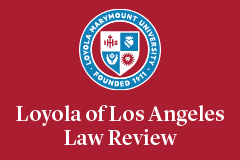Abstract
Dangerous products may give rise to colossal liability for commercial actors. Indeed, in 2021, the U.S. Supreme Court denied certiorari in Johnson & Johnson v. Ingham, permitting a more than two billion dollar products liability damages award to stand. In his dissenting opinion in another recent products liability case, Air and Liquid Systems Corp. v. DeVries, Justice Gorsuch declared that “[t]ort law is supposed to be about aligning liability with responsibility.” However, in the products liability context, there have been ongoing debates concerning how best to set legal rules and standards on tort liability. Are general principles of negligence enough to protect the public or is a strict liability system preferable? If a strict liability system is preferred, what system should be adopted and how can standards be set that are stricter than negligence but not overly draconian? The current strict products liability paradigm is predicated upon—at least in many courts and for certain categories of product defects—a “risk-utility” or “cost-benefit” analysis conducted by the fact-finder. While such cost-benefit form of strict liability offers flexibility, many have charged that it is really no different from ordinary negligence, which itself contemplates very similar balancing. We disagree. In this Article, we isolate a discrete decisional framework within which strict liability balancing can be situated, and we then identify and discuss five plausible standards that preserve a cost-benefit balancing, are stricter than negligence, and do not constitute absolute or excessively strict liability.
Recommended Citation
Paul F. Rothstein & Ronald J. Coleman,
Differentiating Strict Products Liability’s Cost-Benefit Analysis from Negligence,
56 Loy. L.A. L. Rev. 637
(2023).
Available at: https://digitalcommons.lmu.edu/llr/vol56/iss2/5


